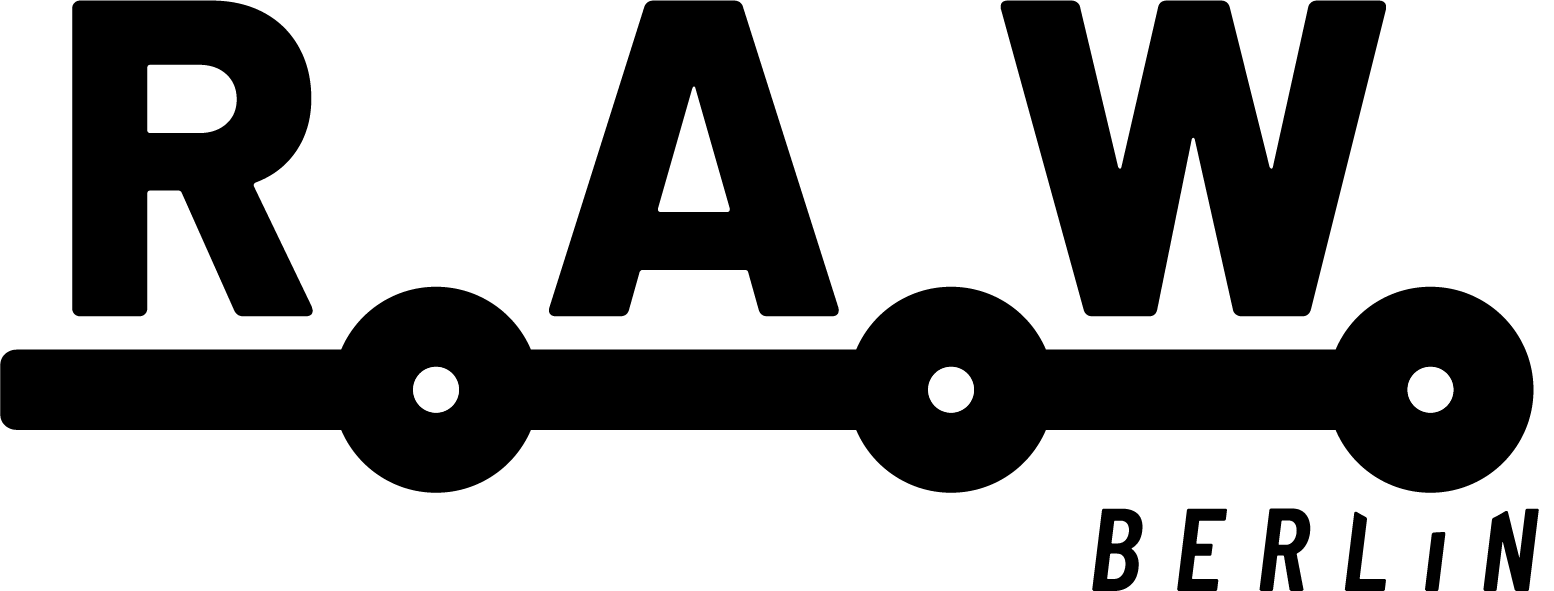History
From being the “National Railway Repair Works” to an industrial wasteland, to its various uses today, the R.A.W. site has an eventful biography, looking back over 150 years of history. Already in its 19th-century state as a busy industrial site, R.A.W. served as an important connective node, workplace, and educational facility for Berliners from Friedrichshain and beyond. After the fall of the Wall, its use evolved in a way typical of Berlin, transforming over the years into a cultural centre with the kind of shops, restaurants, art, music, and culture that draws people to Berlin from across the world.
You can learn more about important stages in R.A.W.’s history here:
BERLIN UNDER STEAM: FOUNDING AND GERMAN EMPIRE
In 1867, the “Royal Prussian Railway Workshop Berlin II” was built on today’s R.A.W. site. It is part of the early economic boom, during which Berlin rose to become the fourth largest city in the world until the beginning of the 20th century. Only a few hundred meters northwest of the workshop area, the old Ostbahnhof (unofficially: Küstriner station) is officially opened on October 1st of the same year. It connects the Prussian capital with East Prussia.

The first plant extension
As early as 1882, the plant was extended to provide the Berlin light rail with maintenance and care work. By the end of the First World War, the number of employees increased to 1,200 people.

From Weimar until German reunification 1989/90
The railway workshop is renamed Reichsbahnausbesserungswerk (National Railway Repair Works) in 1918, after the abolition of the monarchy. The period of the Weimar Republic, and from 1933, the “Third Reich”, marks the end for a large part of the industrial facilities due to an air raid in 1944, which destroyed almost 80 percent of the area. After the war, the plants are rebuilt and, for the 1967 centenary, renamed “Reichsbahnausbesserungswerk (RAW) Franz Stenzer”. The GDR thus commemorates the Communist Reichstag deputy and Bavarian railway worker, who had been murdered in 1933 in the Dachau concentration camp.

BETWEEN DEEP SLEEP AND THE “WILD EAST”
After the fall of the wall the plant is gradually shut down until 1995, with the exception of two halls linked to the original use. Talgo-Werk Berlin employs only around 110 people who maintain trains and locomotives, as the German unification has resulted in an oversupply of repair and maintenance capacities. Not much happens on the site until 1999, where in July of this year, art and cultural workers begin to utilise the buildings on Revaler Straße for temporary use under the umbrella of the specially founded RAW-Tempel association. Gradually, further cultural and culinary uses are established on the site, a typical process for fallow lots in the reunification period in Berlin.
THE R.A.W. SITE TODAY
In 2007, Vivico Real Estate sells the largely dilapidated area to a private investor group, which, however, does not protect, refurbish or further develop it. Some of the users and tenants are also investing in the dilapidated structures in order to temporarily use it for commercial and non-profit purposes. Parts of the site will be temporarily repaired and temporarily leased to cover the significant running costs. Over the years, there are mounting complaints from the R.A.W. site’s residents, visitors, and tenants due to the increase of thieves, drug dealers, and other criminals. Since April 01, 2015, the Kurth Group has been the owner of the 52,000 square meter area on the R.A.W.

